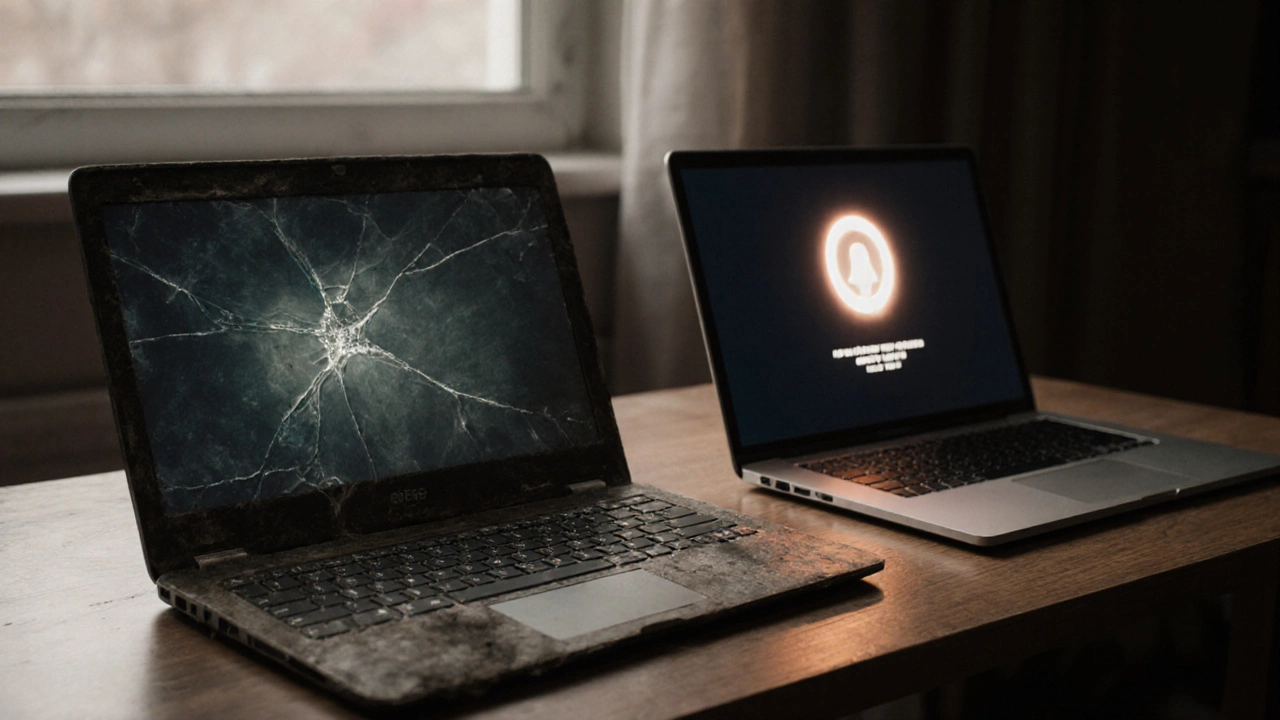10 Year Old Laptop: Is It Worth Repairing or Should You Replace It?
When you’ve got a 10 year old laptop, a consumer electronics device designed for portable computing, often used for work, browsing, and media. Also known as a notebook computer, it’s likely seen more updates, crashes, and coffee spills than most smartphones. Most people assume anything this old is dead on arrival—but that’s not always true. Many laptops from a decade ago still run fine if the battery’s swapped, the hard drive’s upgraded, or the thermal paste’s been cleaned out. The real question isn’t whether it works—it’s whether fixing it makes sense.
A laptop repair, the process of diagnosing and fixing hardware or software issues in a portable computer can cost anywhere from £50 to £250, depending on what’s broken. A failing battery? £40. A cracked screen? £120. A motherboard issue? That’s usually the end of the line. Compare that to a new laptop, which starts around £400 and goes up fast. If your machine still boots, runs your apps, and doesn’t overheat like a space heater, spending £100 to extend its life by another 2-3 years isn’t crazy. But if you’re constantly rebooting, waiting for files to load, or dealing with random shutdowns, you’re not saving money—you’re wasting time.
Here’s the thing: laptop lifespan, the average time a portable computer remains functional and useful before needing replacement isn’t fixed. Some die after 4 years because they were abused. Others last 8, 10, even 12 years with care. It’s not about age—it’s about usage. A laptop used for email and web browsing? It can keep going. One used for video editing or gaming? It’ll slow down fast. The biggest killers are heat, dust, and worn-out batteries. Clean the vents, replace the battery, and swap the drive for an SSD, and you’ll feel like you’ve got a new machine.
And then there’s the repair vs replace laptop, the decision-making process between fixing an existing device or buying a new one based on cost, performance, and longevity dilemma. If your laptop’s running Windows 7 or an old version of macOS, software updates won’t help. Security patches stop. Apps stop working. That’s not a repair problem—that’s an obsolescence problem. But if it’s still on a supported OS, and the hardware’s holding up, there’s no rush to ditch it. You don’t need the latest i7 or 32GB of RAM to check emails or pay bills.
What you’ll find below are real stories from people who’ve been there—someone who fixed their 10-year-old ThinkPad for £80 and still uses it daily. Someone else who spent £200 on a repair only to have the screen crack a month later. We’ve got guides on checking battery health, swapping drives, diagnosing overheating, and even how to tell if your laptop’s motherboard is done for good. No fluff. No upsells. Just what actually works—and what’s a waste of money.
Is a 10-year-old laptop worth keeping? The answer isn't about nostalgia - it's about cost, security, and real performance. Learn when to repair, upgrade, or replace your old machine.


